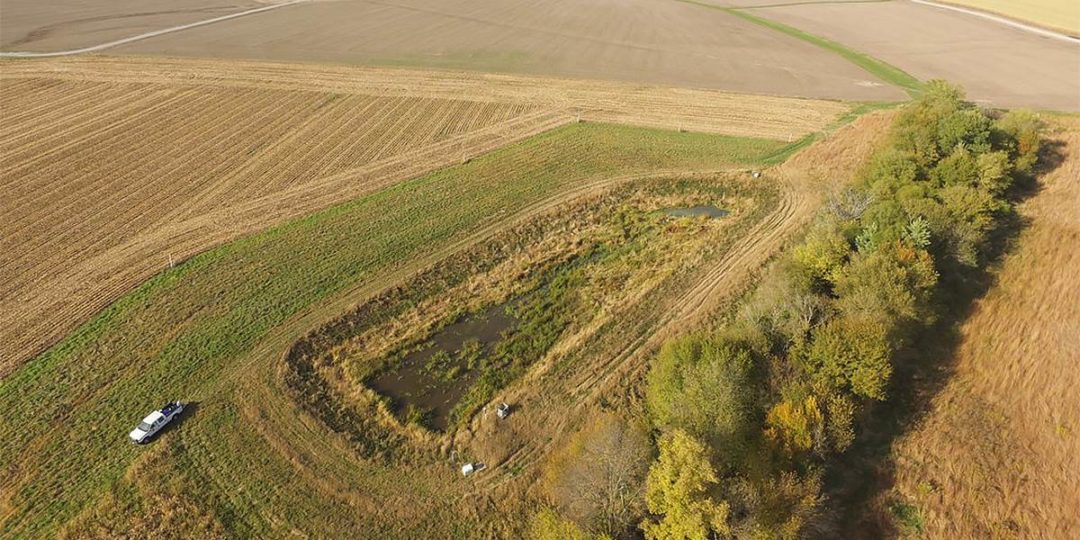The Wetlands Initiative (TWI), Chicago, and Ducks Unlimited (DU), Memphis, Tennessee, have combined resources to help Illinois farmers install ‘Smart Wetlands’ to combat the Gulf of Mexico’s hypoxia zone – a ‘dead zone’ of oxygen-depleted water covering more than 5,000 square miles at the Mississippi River Delta.
Hypoxia occurs after rain runoff carries phosphorus and nitrates into the Gulf from the Mississippi River. This dead zone threatens to deplete valuable fisheries and disrupt fragile ecosystems. The Illinois River Watershed is one of the largest contributors to the Gulf’s dead zone; the same nitrogen and phosphorus runoff problem has caused recent hypoxic events in midwestern waters as well, including Lake Erie and the Ohio River.
Wetlands are one of the most effective natural water quality filters and are a major solution for reducing nutrient runoff and hypoxia. DU, the world leader in wetlands conservation, has teamed with the Illinois-based organization TWI to create new Smart Wetlands in strategic locations on agricultural fields. Developed and tested by TWI on several working farms in Illinois, a Smart Wetland is a small, constructed wetland that uses naturally occurring processes to remove excess nutrients from agricultural tile drainage before it leaves cropland.
Through the new partnership, TWI and DU will educate farmers on the benefits of installing Smart Wetlands and jointly pursue funding. TWI will share years of Smart Wetland modeling and technical know-how, and DU’s engineering teams will help design and implement new farm-based projects. Smart Wetlands align with Illinois’ strategy for nutrient loss reduction and are a time-saving practice that can effectively remove pollutants for more than 30 years at a location. When properly sited, sized and designed, a Smart Wetland of just a few acres can treat tile runoff from hundreds of acres of drained cropland.
Smart Wetlands can help Illinois meet its nutrient reduction goals of reducing its phosphorus load by 25% and its nitrate-nitrogen load by 15% by 2025. The eventual target is a 45% reduction in the loss of these nutrients to the Mississippi River.
Agriculture producers are the greatest ally for improving water quality. Michael Thacker, who farms 4,500 acres of corn and soybeans in Walnut, Illinois, is an example of how landowners can blend profitable farming with conservation practices.
TWI installed a four-acre Smart Wetland and grassland-pollinator habitat on a parcel of Thacker’s farm. The project has successfully treated drain tile runoff from the surrounding 40 acres. The University of Illinois at Chicago monitored the nutrient load before water entered and exited the constructed marsh.
Between 2016 and 2019, the small site removed more than 7,200 pounds of nitrates, or up to 46 pounds per acre of drainage area, per year.
“For all my life, this has been my home,” said Thacker, also a DU member. “I love what I have here. I have a daughter and I want to keep this area nice for her. The wetland requires no work on my part, and it makes me feel good that I’m doing things to help the environment.”
The partnership includes DU and TWI field staff spending time on the ground with prospective landowners, explaining the process and subscribing to Farm Bill programs and other grants to cover construction costs.






